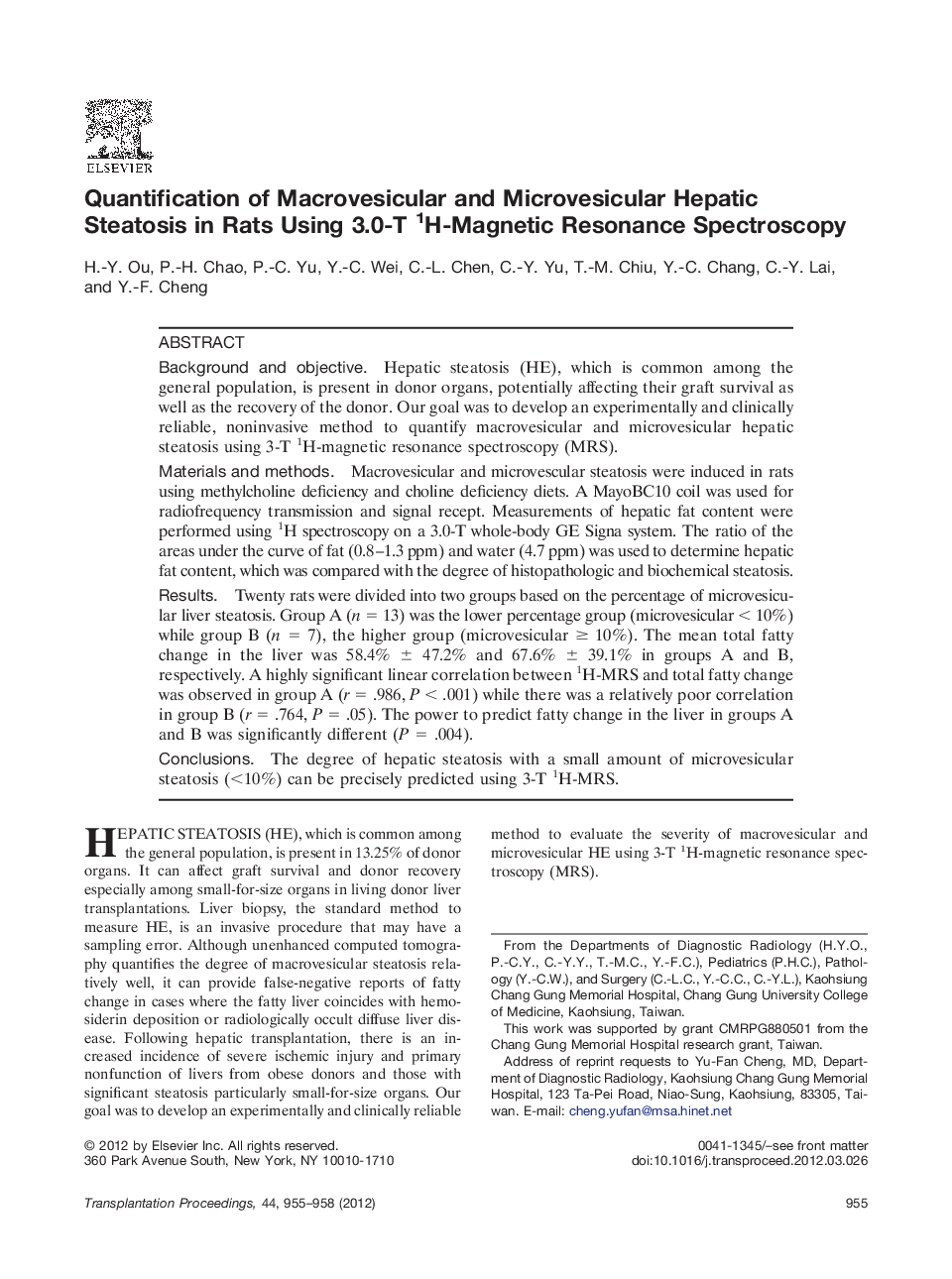| Article ID | Journal | Published Year | Pages | File Type |
|---|---|---|---|---|
| 4256833 | Transplantation Proceedings | 2012 | 4 Pages |
Background and objectiveHepatic steatosis (HE), which is common among the general population, is present in donor organs, potentially affecting their graft survival as well as the recovery of the donor. Our goal was to develop an experimentally and clinically reliable, noninvasive method to quantify macrovesicular and microvesicular hepatic steatosis using 3-T 1H-magnetic resonance spectroscopy (MRS).Materials and methodsMacrovesicular and microvescular steatosis were induced in rats using methylcholine deficiency and choline deficiency diets. A MayoBC10 coil was used for radiofrequency transmission and signal recept. Measurements of hepatic fat content were performed using 1H spectroscopy on a 3.0-T whole-body GE Signa system. The ratio of the areas under the curve of fat (0.8–1.3 ppm) and water (4.7 ppm) was used to determine hepatic fat content, which was compared with the degree of histopathologic and biochemical steatosis.ResultsTwenty rats were divided into two groups based on the percentage of microvesicular liver steatosis. Group A (n = 13) was the lower percentage group (microvesicular < 10%) while group B (n = 7), the higher group (microvesicular ≥ 10%). The mean total fatty change in the liver was 58.4% ± 47.2% and 67.6% ± 39.1% in groups A and B, respectively. A highly significant linear correlation between 1H-MRS and total fatty change was observed in group A (r = .986, P < .001) while there was a relatively poor correlation in group B (r = .764, P = .05). The power to predict fatty change in the liver in groups A and B was significantly different (P = .004).ConclusionsThe degree of hepatic steatosis with a small amount of microvesicular steatosis (<10%) can be precisely predicted using 3-T 1H-MRS.
